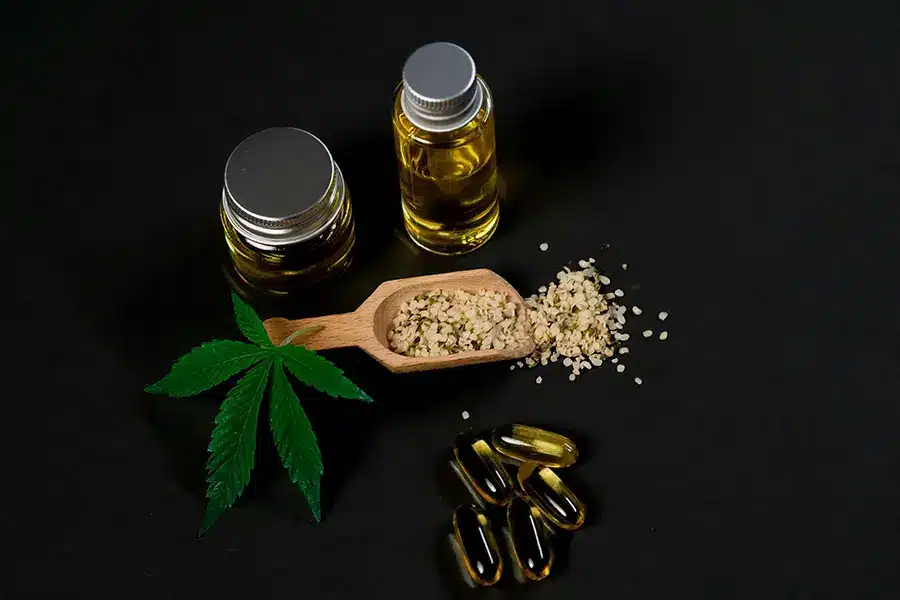Ever get curious about how something is made? Is it made in a lab or someone’s garage? Delta-8 is a rare cannabis extract that is becoming more popular as people learn about its benefits, and is similar to delta-9, but it has some unique properties that make it worth seeking out. In this article, we will discuss how this extract is made and the science behind it.
Delta-8 is made from CDB!
Delta-eight is a pure form of CBD that is found in raw cannabis plants. To extract delta-eight, THCO must be processed. This acronym stands for Tetrahydrocannabinolic Acid, and it is the main component in delta-eight. THCO is found in raw cannabis plants, and it must be processed to create delta-eight. Large amounts of the raw plant are grown and then harvested for their flower or “buds”. The Raw flower is then cut into smaller pieces. The cut plant is then hung up and dried in a large dehumidifier room. Sometimes the cut plants are placed in a freezer to preserve the raw tri-combs and active components of the plant.
After the curing process, the plants can be trimmed further, pressed, or extracted. The safest way to extract it is through pressing. A small amount of heat is applied and a large press presses the delta oils out and off of the flower material.
In another way, the first step is to extract THCO from raw cannabis plants. This can be done using solvents such as ethanol or butane. The THCO is then separated from the plant material and purified. The purified THCO is then heated to create delta-eight.

Delta-8 Structure (Science For Nerds)
Delta-8 THC is delta-9 tetrahydrocannabinol cannabidiol, or CBD with an extra double bond in the chemical structure. Delta-8 THC has a molecular formula of C21H30O2 and a molar mass of 314.5 g/mol. and is most often found as an oily yellow resinous substance at room temperature. Delta-8 THC is most notably found in the popular Dronabinol medication used to treat nausea associated with chemotherapy, as well as lack of appetite in AIDS patients suffering from extreme weight loss. Is also known by the name octahydrocannabinol for this reason because it was discovered after delta-9 THC which is better known to the general public. Delta-8 is found in much lower concentrations than delta-9 but is most often harvested in its highest concentration form, is also half as psychoactive as regular THC like delta-9. Delta-8 is often found in different types of hash oil, along with a plethora of other delta cannabinoid forms over 600 known delta forms CBD Derived
CBD Derived THC
A CBD derived from the delta, or CBD as it’s commonly referred to short for cannabidivarin, is a CBD derivative that has no psychoactive effects and can be used as an anticonvulsant similar to its sister molecule THC which has been tested as a successful epileptic anti-seizure treatment for those who suffer from epilepsy. Delta-8 THC and delta-9 THC both belong to a class of chemicals known as cannabinoids, which are the active molecules that constitute cannabis. Delta-8 THC is capable of being much more concentrated and shares many similarities with delta-9 but is slightly different in its dosage form through various lab testing methods, delta-9 has much lower levels of delta cannabinoids produced by organic cannabis plants. Check out our guide on edible marijuana for more weed educational posts.
What is Delta-8 Conclusion
In conclusion, the cannabis plant’s ability to produce compounds like delta-9 THC, recognized for its psychoactive effects, and delta-8 THC, known for its potential therapeutic benefits, showcases the complexity and potential of this unique botanical. Although delta-9 is more commonly known among the public, it’s the lesser-discussed delta-8 that holds intriguing possibilities, especially due to its concentrated form and high levels of CBD. Both delta-8 and delta-9 have shown promise as anticonvulsant treatments, offering a glimpse into the future of epilepsy treatment. The relatively non-psychoactive nature of delta-8, coupled with its potency, may position it as a focal point for further research and application within medical contexts. It’s important for both the scientific community and the public to continue exploring the nuances of these cannabinoids to fully harness their therapeutic properties while considering the legal and ethical implications of their use.






